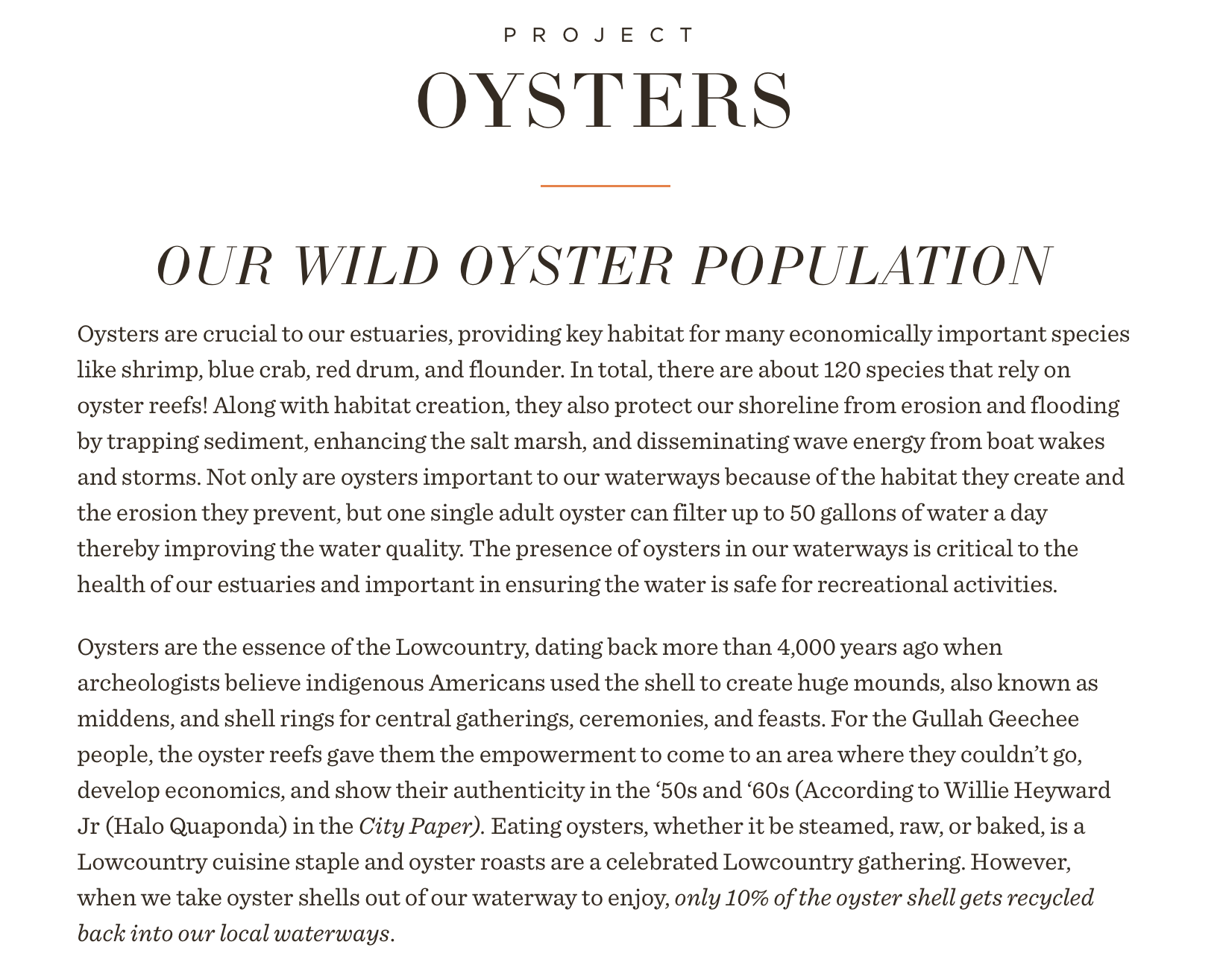Gullah Conservation
Oysters are the essence of the Lowcountry, dating back more than 4,000 years ago when archeologists believe indigenous Americans used the shell to create huge mounds, also known as middens, and shell rings for central gatherings, ceremonies, and feasts. For the Gullah Geechee people, the oyster reefs gave them the empowerment to come to an area where they couldn’t go, develop economics, and show their authenticity in the ‘50s and ‘60s (According to Willie Heyward Jr (Halo Quaponda) in the City Paper). In total, there are about 120 species that rely on oyster reefs! Along with habitat creation, they also protect our shoreline from erosion and flooding by trapping sediment, enhancing the salt marsh, and disseminating wave energy from boat wakes and storms. Not only are oysters important to our waterways because of the habitat they create and the erosion they prevent, but one single adult oyster can filter up to 50 gallons of water a day thereby improving the water quality. The presence of oysters in our waterways is critical to the health of our estuaries and important in ensuring the water is safe for recreational activities.

